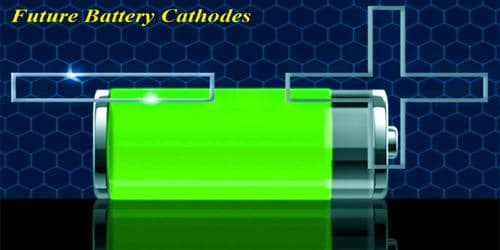New Development of Future Battery Cathodes
The Li-ion battery (LIB) industry has rapidly developed and dominates the market of electric vehicles and portable electronic devices. While smartphones, smart homes, and even smart wearables are growing ever more advanced, they’re still limited by power. Big technology and car companies are all too aware of the limitations of lithium-ion batteries. The paper, “First cycle voltage hysteresis in Li-rich 3d cathodes associated with molecular O2 trapped in the bulk” by a joint team from the University of Oxford, the Henry Royce and Faraday Institutions, and Diamond Light Source, the UK’s national synchrotron examines the results of their investigations to better understand the important compound known in the battery industry as Li-rich NMC. Battery-powered portable devices have transformed our lives. But there’s a lot more than batteries can disrupt if only safer, more powerful, and energy-dense batteries could be made cheaply.
Researchers at the University of Texas have developed a lithium-ion battery that doesn’t use cobalt for its cathode. A previous study into this process made by the same research team, at the I21 beamline at Diamond, reported that, in Na-ion battery cathodes, the voltage hysteresis is related to the formation of molecular O2 trapped inside of the particles due to the migration of transition metal ions during the charging process. Instead, it switched to a high percentage of nickel (89 percent) using manganese and aluminum for the other ingredients.
While the emission-reducing properties of electric vehicles are widely accepted, there’s still controversy around the batteries, particularly the use of metals like cobalt. Looking to overcome the problem of unstable silicon in lithium-ion batteries, researchers at the University of Eastern Finland have developed a method to produce a hybrid anode, using mesoporous silicon microparticles and carbon nanotubes.
IBM Research is reporting that it has discovered new battery chemistry that is free from heavy metals like nickel and cobalt and could potentially out-perform lithium-ion. Li-rich cathode materials are one of the very few options available to increase the energy density of Li-ion batteries. Almost all of the lithium in these structures can be removed, compensated first by oxidation of the transition metal (TM) ions and subsequently the oxide ions. The performance of the battery is promising, with IBM Research saying that it can out-perform lithium-ion in a number of different areas – it’s cheaper to manufacture, it can charge faster than lithium-ion, and can pack in both higher power and energy densities. However, the high voltage associated with this O-redox process on the charge is not recovered on discharge leading to so-called voltage hysteresis and a substantial loss of energy density. This represents one of the key challenges that has inhibited exploiting the full potential of these materials and the understanding of this phenomenon remains incomplete. Every battery has two electrodes: a cathode and an anode. Most anodes of lithium-ion batteries are made of graphite, but cathodes are made of various materials, depending on what the battery will be used for.

Fig: Battery Technology Will Drive the Future
Lithium-ion batteries have a rather volatile liquid electrolyte porous material layer sandwiched between the anode and cathode layers. “In our study, we used HR RIXS — High Resolution- Resonant Inelastic X-ray Scattering spectroscopy at beamline I21 at Diamond to investigate the O-redox process. This is how the material stores charge on the oxide ions, which make up part of its structure. However, this process has proved very difficult for researchers to understand fully. When a battery is charging, the ions travel from the cathode to the anode; when the battery is powering something, the ions move in the opposite direction.
In common parlance, people use “energy” and “power” interchangeably, but it’s important to differentiate between them when talking about batteries. “The data we achieved allowed us to assign mysterious spectroscopic features that had previously been detected by the RIXS technique but could not be fully identified. We were able to resolve fine structure arising from the vibrations of O2 molecules allowing us to assign the RIXS features obtained in this important class of battery material. These O2 molecules are trapped within the bulk of the cathode material and can be reformed back into oxide ions during discharge, but at a lower voltage than on the initial charge. This provides a new mechanism for explaining the O-redox process and represents an important step forward for battery materials.” Recent work on new materials shows that there is a good likelihood that the lithium-ion battery will continue to improve in cost, energy, safety, and power capability and will be a formidable competitor for some years to come. Battery chemist can do that, in theory, by increasing the energy density of either the cathode or the anode, or both.
















